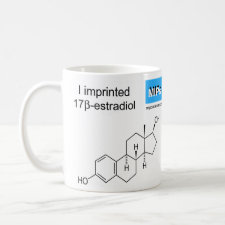
Authors: Ikegami T, Kataoka R, Sunayama H, Takeuchi T
Article Title: In Silico Characterization of Binding Properties on a Molecularly Imprinted Polymer.
Publication date: 2021
Journal: Bunseki Kagaku
Volume: 70
Issue: (3)
Page numbers: 111-124.
DOI: 10.2116/bunsekikagaku.70.111
Alternative URL: https://www.jstage.jst.go.jp/article/bunsekikagaku/70/3/70_111/_article
Abstract: Molecularly imprinted polymers (MIPs) are attracting attention as artificial molecular recognition materials instead of unstable natural receptors. Previously, we had synthesized MIPs toward Bisphenol A (BPA). The prepared MIPs could capture not only BPA but also 17β-estradiol, an estrogen steroid hormone. This suggests that the prepared MIPs have binding properties similar to estrogen receptors. In this study, the binding properties of structurally related compounds toward the MIPs were investigated by in silico analysis focusing on the three-dimensional structure of the compounds. These investigations revealed that various factors obtained from each global minimum structure of compounds, such as the positions of interacting groups, conformational flexibility, van der Waals volume, intra-atomic distance between interacting groups on the compounds and pKa of interacting group, are related to experimental retention factors. Using molecular descriptors calculated from the compounds, four types of prediction models for retention factors were derived by a quantitative structure-property relationship analysis, and the calculated values and experimental values showed a high correlation. A consensus pharmacophore was extracted from 7 compounds with strong affinity to the MIPs. These models could be expected to be used for predicting the retention factor from global minimum structures of compounds and for pre-screening candidate compounds before starting actual binding experiments. In addition, it could potentially be used to predict and design compounds with strong affinity for MIPs by a reverse analysis method
Template and target information: bisphenol A, BPA, 17β-estradiol
Author keywords: molecular imprinting, bisphenol A, binding sites, artificial receptor, in silico



Join the Society for Molecular Imprinting

New items RSS feed
Sign-up for e-mail updates:
Choose between receiving an occasional newsletter or more frequent e-mail alerts.
Click here to go to the sign-up page.
Is your name elemental or peptidic? Enter your name and find out by clicking either of the buttons below!
Other products you may like:
 MIPdatabase
MIPdatabase









